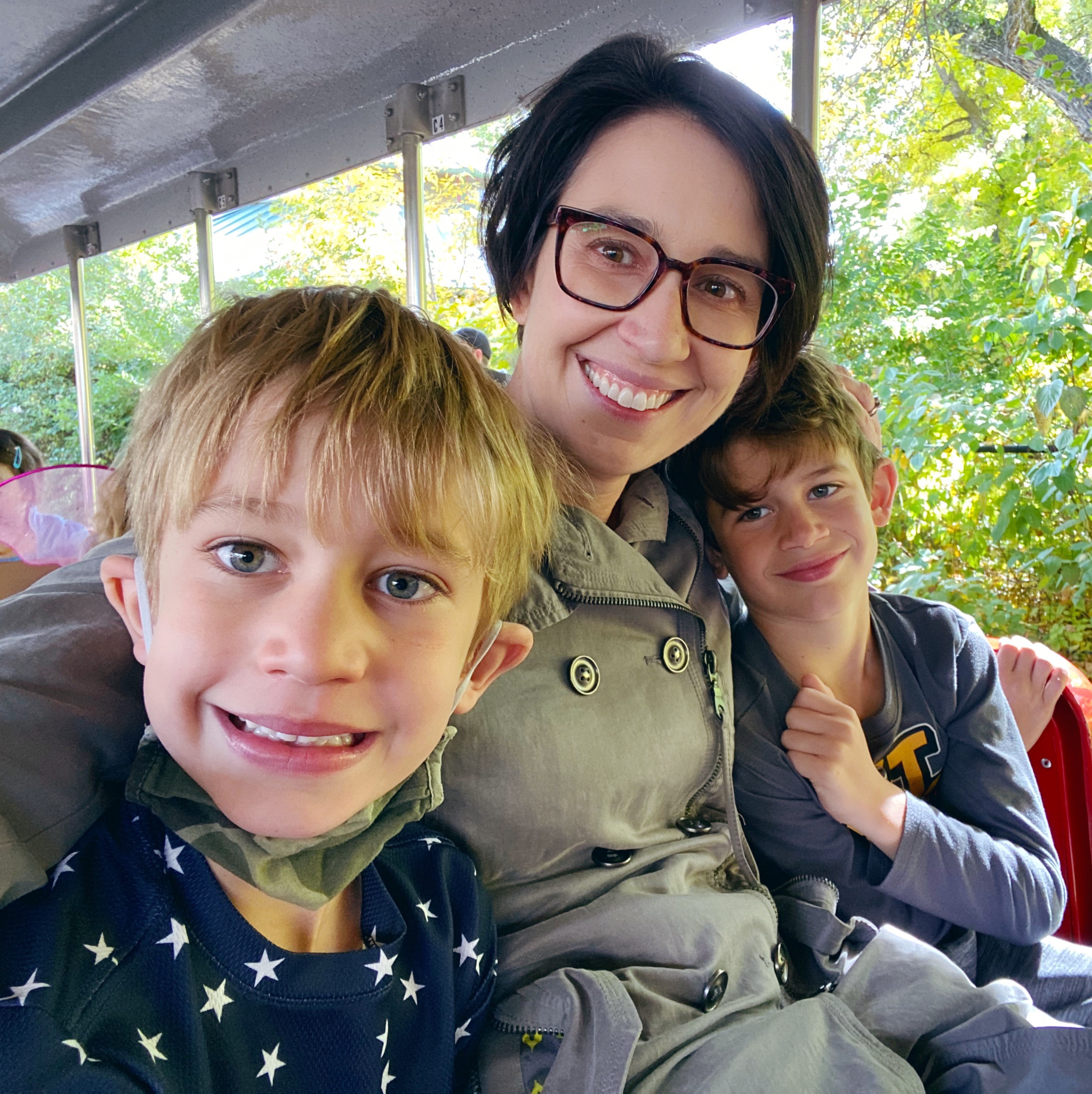I was a just-right child for most adults — the kind introverted enough to not talk much in class, anxious enough to deeply fear getting into any degree of trouble, engaged enough to want to learn, people-pleasing enough to strive for good grades and reviews, and not quite brave enough to ask too many difficult questions. “A pleasure to have in class,” teacher’s would quip, which mostly meant I took it easy on them. (When your dad is the Principal and your mom is the Guidance Counselor, taking it easy on your teachers and coaches means they take it easy on you, and you quickly learn the path of least resistance is a win-win for everyone.)
So, naturally, when I had children, they quickly took my best strategy and lit in on fire (very publically) after wrapping it in explosives. We’re still watching it burn.
It’s been a bit like learning to walk for the first time, learning to advocate for my children. Only this time, it’s been a team sport. First I learned to sit with my boys. We all teetered about, trying to find a teensy bit of balance and to understand one another, frequently toppling over and losing all sight of the horizon line. Eventually, we started to get the hang of sitting and staring at each other with bewilderment, so we tried on crawling. That was a mess, too, because we were all working with different centers of gravity. Our strengths and challenges were all different, and we had to figure out how to move mostly forward most of the time — all together. It was a process, but we got there. And then we moved onto pulling up to standing, eventually putting one foot in front of the other, stumbling, walking, and eventually running. It was a good feeling to be moving forward together, amazing to look back and see how far we had come. But then came the challenge of inviting others to walk with us — family, friends, teachers, sitters. I suppose that’s where we discovered that our gaits were a bit different and perhaps it was going to take a bit of extra effort to walk with the wider world.
My kids are not (and never will be) path-of-least-resistance humans. They’re not “just-right” kids. They won’t make themselves smaller for anyone’s convenience, and, frankly, I don’t want them to because their magic is in their differences. While I believe all of that deeply in my soul, it also means that they are often not easy children to parent, teach, coach, and share space with.
We’ve had some rough chapters, some bumpy stages, some hard years. We’ve met a whole lot of folks who have decided to walk along without us. I’ve had to learn that it’s ok not to be for everyone, not understood or appreciated by everyone. It’s ok not to be guided at all times by the strategy to go easy on everyone else. We’ve left a school, camps, activities, and caregivers behind because they weren’t into our weird ways of ambulating, which was devastating, demoralizing, and depressing in those moments, but all those decisions have moved us forward as a family.
So, wow, when you find the people that are up for it, you cherish them. When you find the people that see and understand your people for their strengths and possibilities, and cultivate the seeds of growth that spring up from their often inconvenient challenges, it takes some serious restraint not to smother them with gratitude.
The boys’ new school recognizes students for IB (International Baccalaureate) learner profile traits, and both boys have come home with certificates recognizing them this year.
Our oldest son, who was diagnosed on the Autism Spectrum at age 6, was recognized as a “Communicator.” If you don’t love someone on the Autism Spectrum, you might glaze right over that, but if you do, you know the actual years of work powering through challenges, developing skills, working with therapists and doctors, putting plans in place with educators, trying and failing and trying again to help them develop communication skills that generally come naturally to neurotypical people. I cried when I saw that certificate — for all the work, for all the failures, for all the wins, and mostly for all the possibilities that open up for my beautiful, bright, unique boy when he masters that skill.
And then our younger boy, who was diagnosed with ADHD at the age of 5, was recognized as “Open Minded.” Just this past summer, we were desperately sorting through our options with his diagnosis and some impossibly challenging related behaviors, so to see his teacher’s note about what an open, kind friend he is to his peers — what a gift it is to see others discover what you’ve always known about your child’s true self, but what hasn’t always been on display for others.
To their current teachers, to their school support staff and administrators at Swigert International School that look at every student as unique with an interest in cultivating the precise things that make them them, bless you for seeing their growth beyond their challenges. Thank you for seeing their unique development instead of the contrasting skills of their peers. Thank you for seeing their possibility and helping them see it too. I recognize that it’s easy to miss, that it takes extra time and effort when resources are tight, but you can change the trajectory of an entire life by framing skills gaps as growth opportunities. I will be forever grateful to you for putting that wisdom into practice, and while my boys might not know it yet, I have a feeling they will be too.

